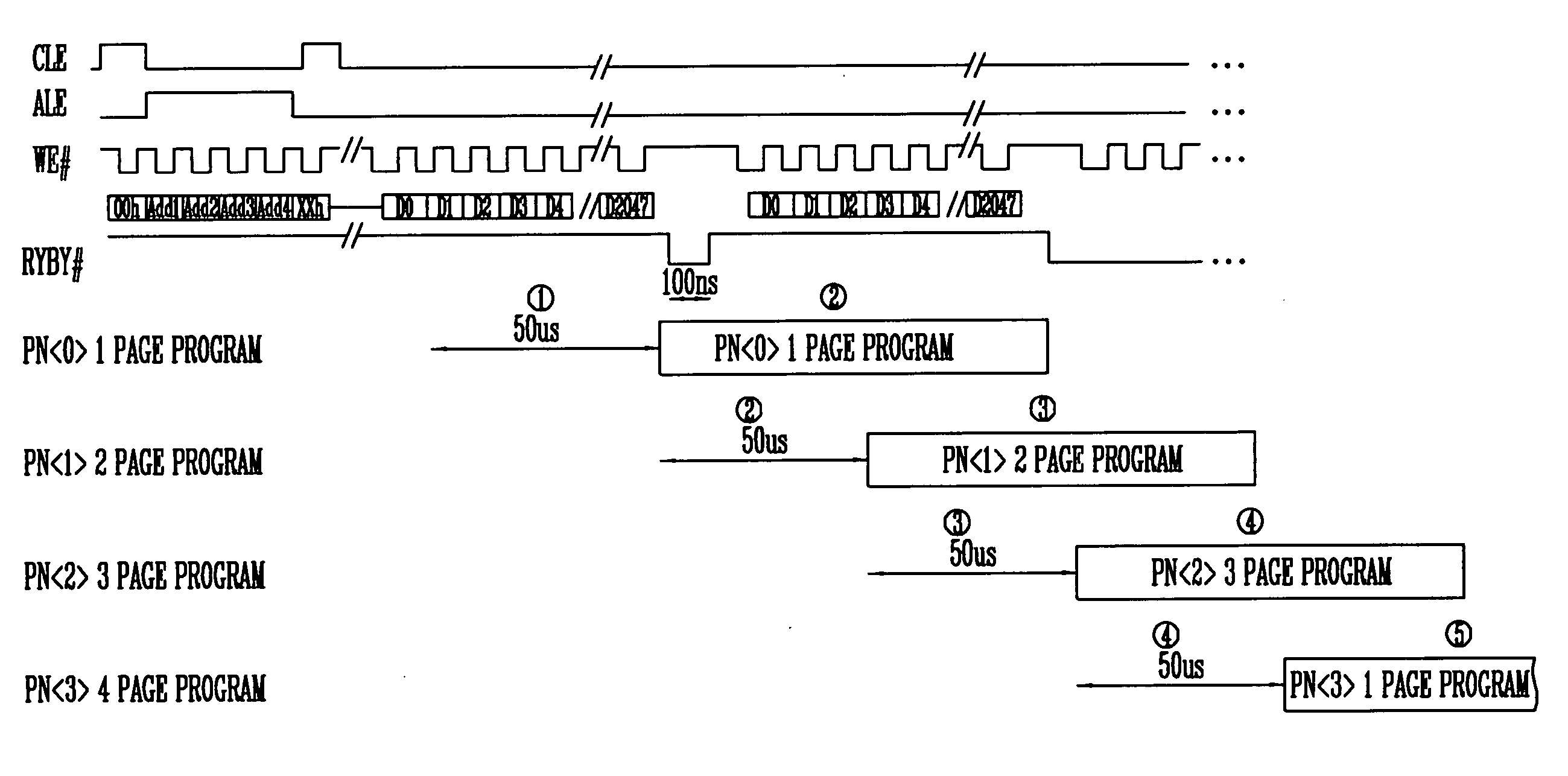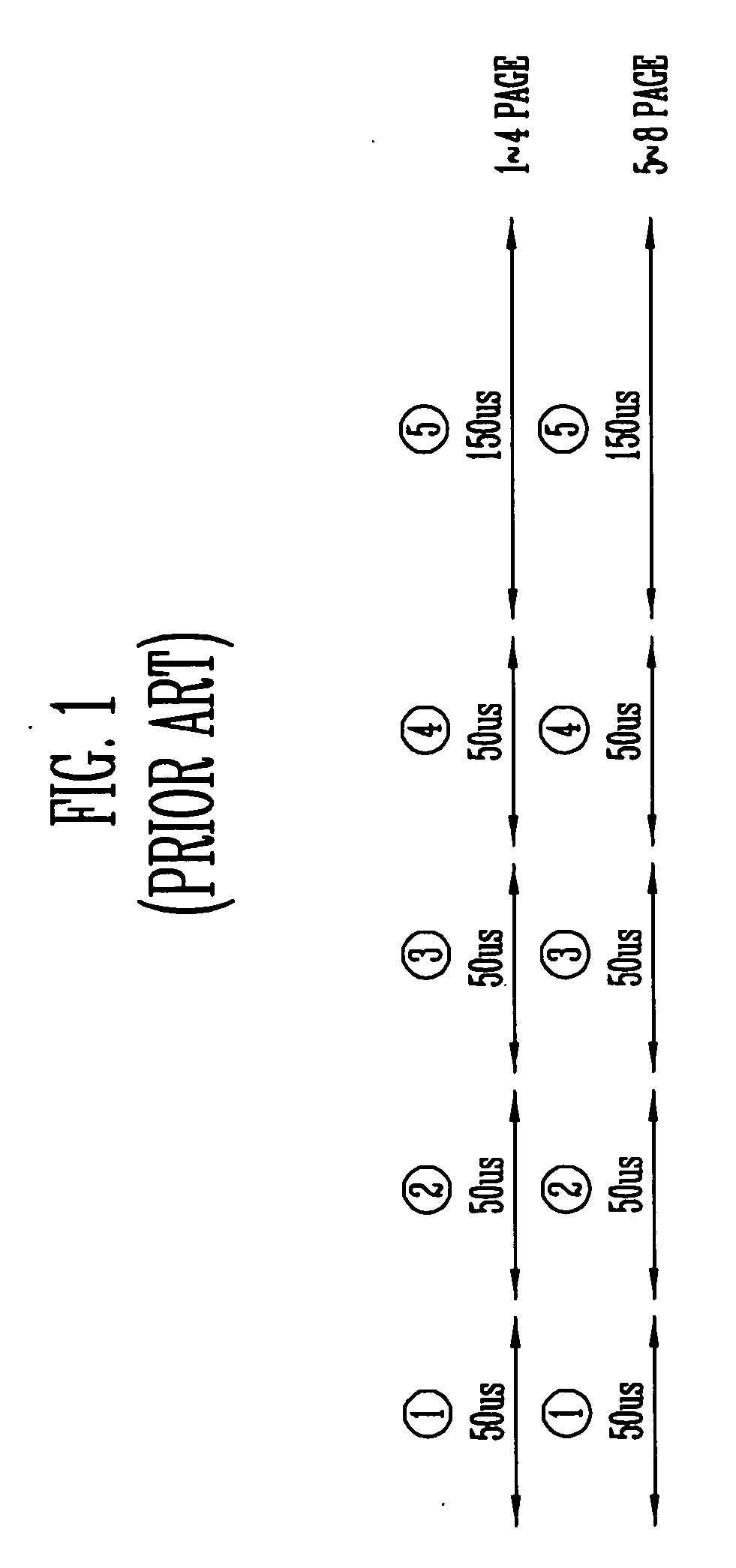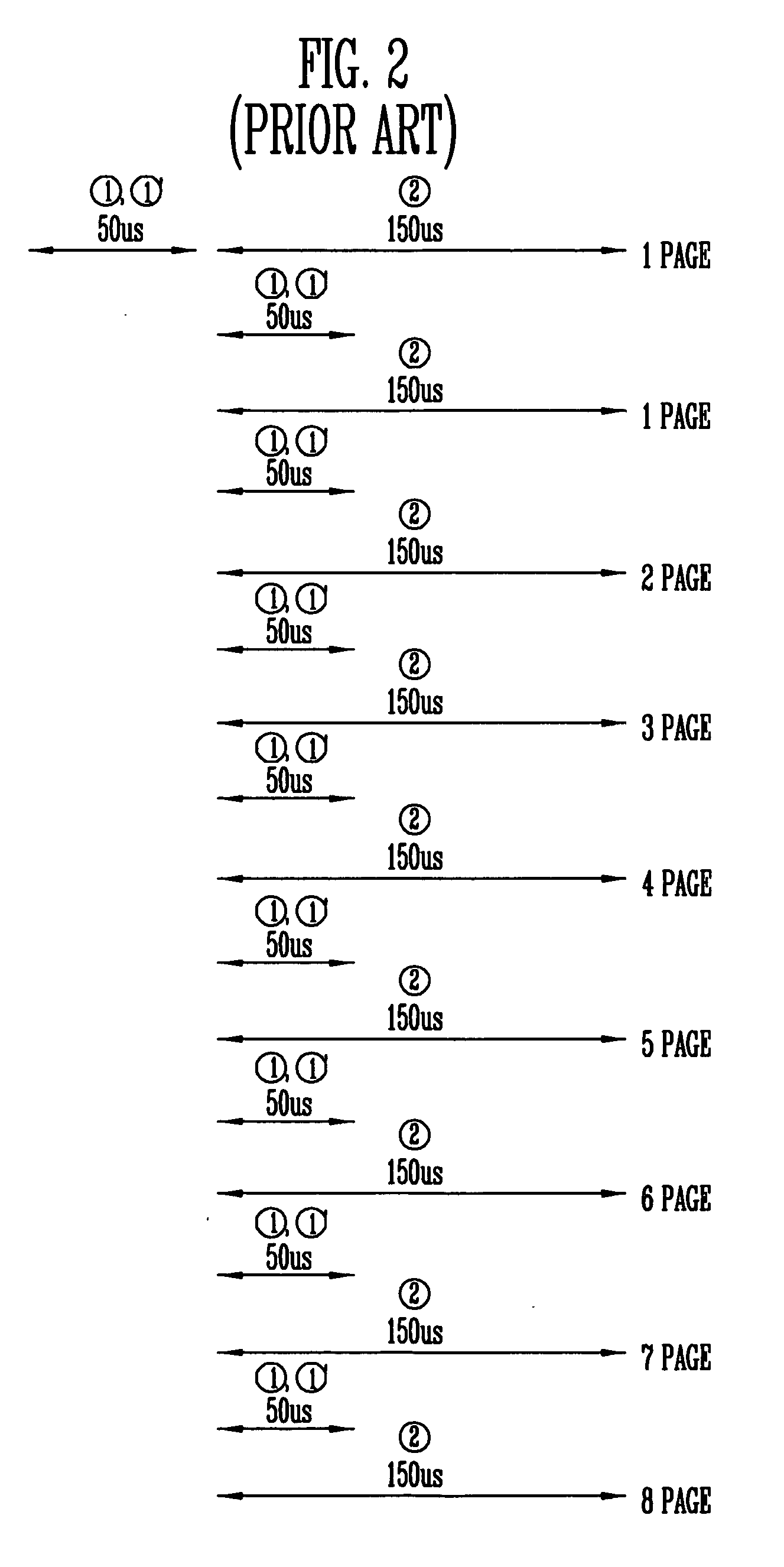Programming method of non-volatile memory device having multi-plane structure
a non-volatile memory and multi-plane technology, applied in the direction of memory architecture accessing/allocation, instruments, computing, etc., can solve the problems of reducing program performance and conventional program method requiring a significantly longer program time, and achieve the effect of reducing program tim
- Summary
- Abstract
- Description
- Claims
- Application Information
AI Technical Summary
Benefits of technology
Problems solved by technology
Method used
Image
Examples
Embodiment Construction
[0025] The present invention will now be described in connection with specific embodiments with reference to the accompanying drawings.
[0026] FIGS. 4 to 6 are views illustrating a multi-page program method of a NAND flash memory device having a multi-plane structure according to an embodiment of the present invention. FIG. 4 is a block diagram of the multi-page program method of the NAND flash memory device having the multi-plane structure. FIG. 5 is a timing diagram of a four-page program method of the NAND flash memory device having the 4-plane structure shown in FIG. 4. FIG. 6 is a timing diagram of an eight-page program method of the NAND flash memory device having the 4-plane structure shown in FIG. 4.
[0027] Referring to FIG. 4, the NAND flash memory device including the multi-plane structure includes four planes PN0> through PN3>. Although four planes are shown in FIG. 4, the number of planes may vary according to applications. Each of the planes PN0> through PN3> includes k...
PUM
 Login to View More
Login to View More Abstract
Description
Claims
Application Information
 Login to View More
Login to View More - R&D
- Intellectual Property
- Life Sciences
- Materials
- Tech Scout
- Unparalleled Data Quality
- Higher Quality Content
- 60% Fewer Hallucinations
Browse by: Latest US Patents, China's latest patents, Technical Efficacy Thesaurus, Application Domain, Technology Topic, Popular Technical Reports.
© 2025 PatSnap. All rights reserved.Legal|Privacy policy|Modern Slavery Act Transparency Statement|Sitemap|About US| Contact US: help@patsnap.com



